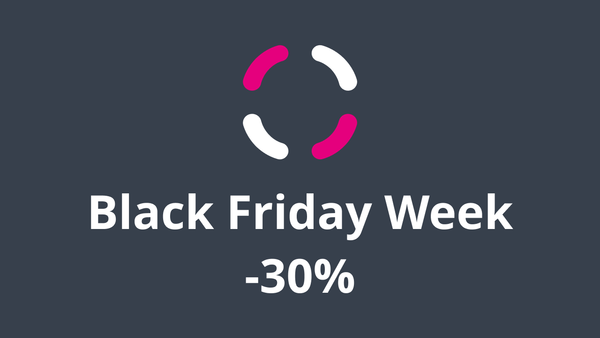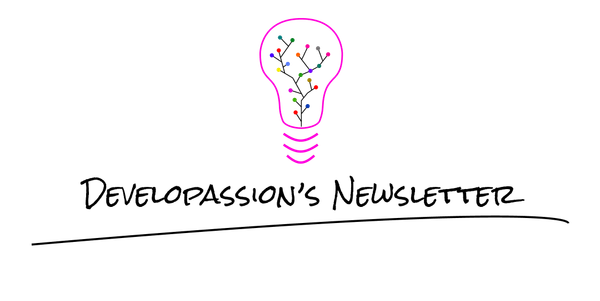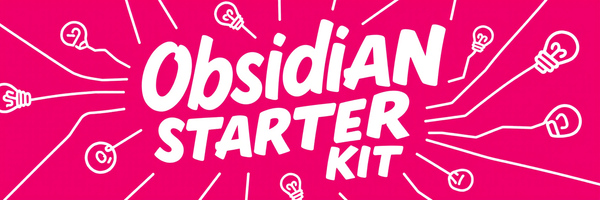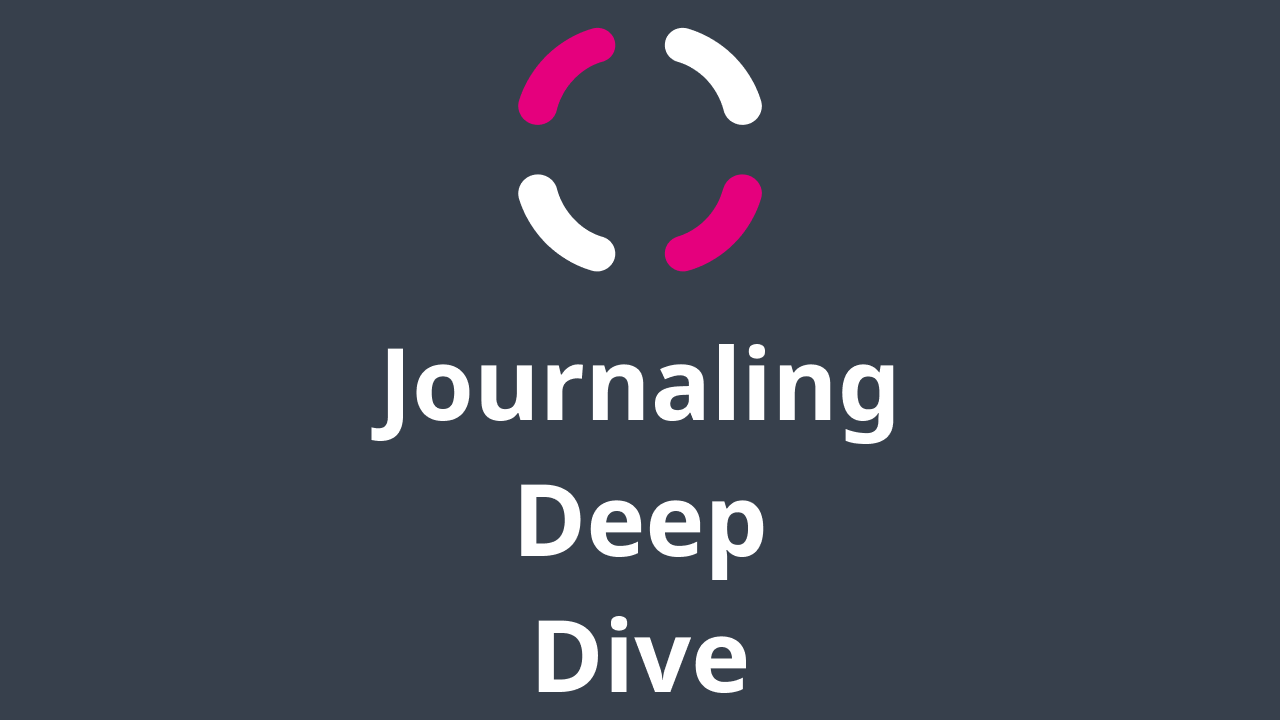10 Essential Knowledge Management Methods Every Professional Should Master
Stop drowning in information. Transform scattered thoughts into organized knowledge with these 10 proven methods

Stop drowning in information. Transform scattered thoughts into organized knowledge with these 10 proven methods from my Knowledge Management for Beginners course.
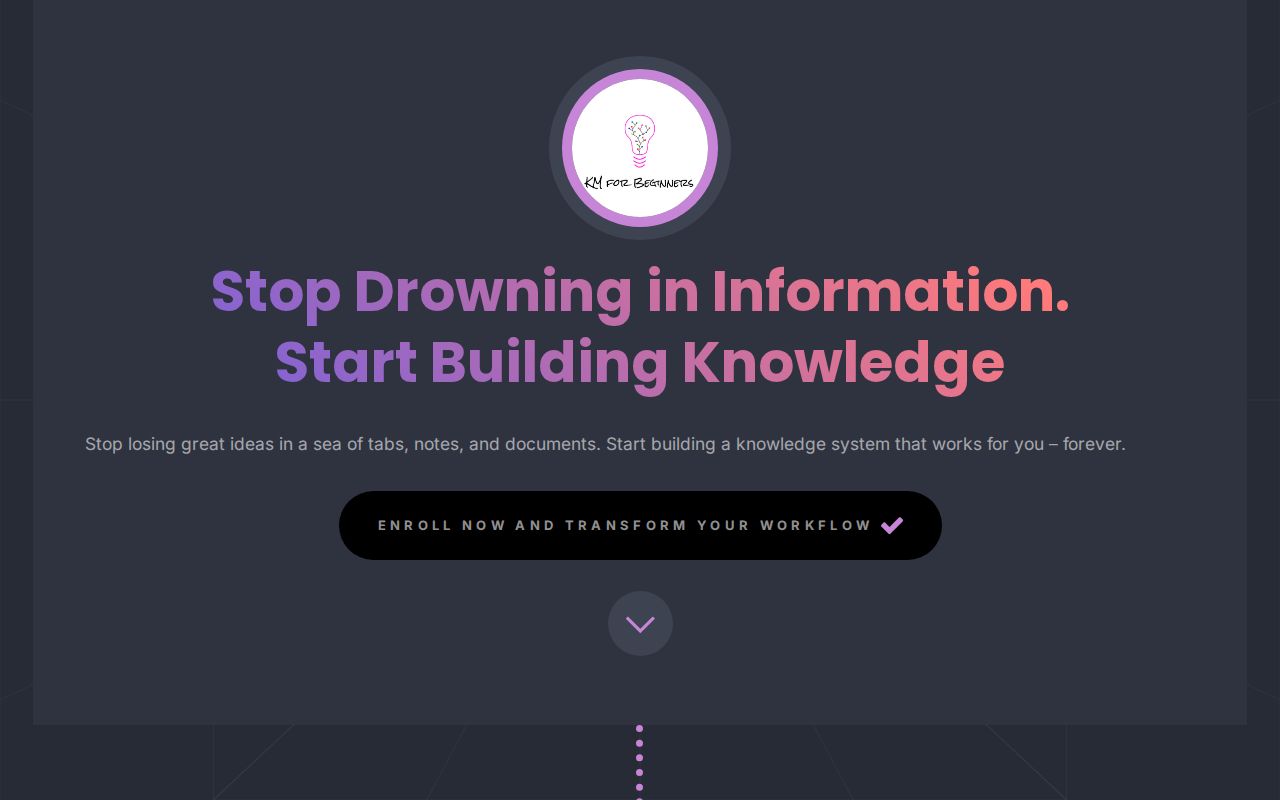
In this article, I want to share the most powerful methods for organizing and using your knowledge effectively. These aren't just theoretical concepts. They're practical systems I teach in my Knowledge Management for Beginners course that can transform how you handle information at work and in life.
Introduction
After years of helping professionals organize their knowledge and refining my own system, I've identified the core methods that separate those who stay on top of information from those who drown in it.
These 10 methods aren't just tools — they're core practices that show you what to build (your knowledge system) and how to use it (your process). Master these, and you'll have a complete framework for transforming scattered information into connected insights.
1. The Knowledge Management Process: A 10-Step System for Learning
This is the backbone of all effective knowledge management. A ten-stage process that turns random information into valuable knowledge you can actually use.
How it works:
- Explore: Find interesting sources like articles, books, podcasts, etc
- Curate: Save content worth reading or watching later. Keep track of what you want to consume
- Consume: Carefully pick a piece you've curated, and actively engage with it
- Capture: Capture what resonates, key insights, and your own thoughts
- Distill: Extract and break down captured information into atomic ideas
- Organize: Organize what you've distilled, file, categorize, and add metadata
- Connect: Break down complex ideas into simple notes and link those together
- Develop: Develop your ideas, leverage your knowledge, and expand your understanding
- Create: Combine existing knowledge into new ideas and content
- Share: Share your insights to help others, get feedback, and uncover the gaps in your knowledge & understanding
The beauty of this process? It's a Virtuous circle. Each time through strengthens your knowledge base and improves your thinking.
This process is described in my public notes: Personal Knowledge Management Process.
2. One-Idea Notes: Keep It Simple and Powerful
Instead of writing long documents that mix multiple topics, create focused notes that contain just one concept or idea. Those are called Atomic notes.
Key characteristics:
- Focus on one idea or concept
- Written in your own words
- Clear and easy to understand
- Easy to connect with other notes
- Reusable in different situations
Think of these as building blocks. Instead of having giant LEGO sets you can't take apart, you have individual pieces you can combine in countless ways.
3. The Knowledge Funnel: From Scattered Ideas to Organized Insights
Your knowledge funnel is the systematic pathway that moves information from "oh, that's interesting" to "I have notes about this I can leverage!"
The funnel stages:
- Quick capture while reading or listening (highlights, quick notes)
- Daily journal as your main collection point
- Weekly review to pull out key ideas (cfr Periodic reviews)
- Organization within your knowledge system
- Regular review to strengthen your understanding
This method ensures nothing valuable gets lost between having an interesting thought and actually being able to use it later.
4. Three Core Types of Notes: Quick, Inspiration, Content
Inspired by the Zettelkasten method, a simple approach that people take way too seriously, this system organizes your knowledge by how you use it.
Note types:
- Quick notes: Temporary captures that need to be processed later (may be copied from others or be your own notes using your own words)
- Inspiration notes: Capture what others have said (quotes, summaries, explanations, etc)
- Content Notes: Your own thoughts and understanding in your own words
The key is regularly converting "Quick notes" into "Inspiration notes" and "Content notes", ensuring your knowledge base grows through active thinking, not just passive collecting.
The approach I recommend for quick notes is to capture those as part of your journal entries (i.e., daily notes). More about this later in this article.
These different types of notes are at the core. But you can have additional ones such as journal entries, meeting notes, personal notes, etc...
5. Connected Thinking: Link Ideas Together
Knowledge becomes really powerful when it's connected. This method focuses on building meaningful relationships between different ideas.
Connection techniques:
- Direct links: Connect one note to related concepts
- Automatic connections: Your software shows you unexpected relationships
- Tags and metadata: Add categories to make ideas easier to find
- Maps: Create index notes that organize related concepts (cfr Maps of Content (MoCs))
Ask yourself: "What does this remind me of?" and "How is this different from what I already know?" to discover natural connections.
Take some time Maps of Content (MoCs); maps of your ideas about different topics. Here are some of mine:
Those become more and more valuable over time.
6. The Capture System: Never Lose a Good Idea Again
A reliable capture system ensures you never lose valuable insights, no matter when or where they occur.
System components:
- Digital tools: Note-taking apps, save-for-later services, voice recording apps
- Mobile access: Apps that work on all your devices
- Easy transfer: Ways to move what you capture into your main system
- Last resort: Paper, notebooks for when you can't use your phone
The goal isn't to capture everything. Rather, the goal is to capture what matters when inspiration strikes.
But at the end of the day, you want a Single Source of Truth (SSOT), a single place where you regroup everything. All your knowledge and ideas need to converge to that place.
7. PARA Method: Organize by What You'll Do With It
The PARA method of Tiago Forte provides a simple way to organize any type of information based on how actionable it is.
Four "spaces":
- Projects: Things with deadlines and specific outcomes
- Areas: Ongoing responsibilities without deadlines (you can store MOST of your notes there)
- Resources: Reference materials (e.g., images, PDF documents, etc)
- Archives: Old items you want to keep around just in case
PARA works because it organizes information by what you'll do with it, not what topic it covers — making it much easier to find what you need when you need it.
Whatever you do, keep this in mind: organizing information by topic does not work and does not scale. Organize your information by type, it works much better, simplifies everything, and scales really well.
You may also combine the PARA method with the Johnny Decimal system created by Johnny Noble.
Ideally, you want to reuse the same base structure everywhere (notes, emails, documents, etc).
8. Daily Notes: Your Knowledge Command Center
Your daily note serves as the main entry point for new information and the planning center for your day.
Daily note sections:
- Today's plan: Key priorities and focus areas
- Discovered Today: What you learned today/captured
- Notes: Space for ideas, observations. Digital scratchpad
- What I accomplished: Progress tracking and wins
- Challenges: Problems I'm working through
- Gratitude: What you feel grateful for
- Interesting finds: Content to explore later
This method connects your learning with specific days, making it easier to track your growth and remember the context of ideas. With this simple approach, you have ONE place to capture everything new, focus on what matters, track achievements, challenges, and you can also capture what brought you joy.
Moreover, this links knowledge with time, which is really valuable to be able to look back more objectively.
See Journaling (MoC) for more about this.
9. Regular Reviews: Turn Information Into Knowledge
Regular reviews transform scattered daily captures into organized, connected knowledge that you can actually use.
Review schedule:
- Weekly: Process daily notes, pull out key ideas, make connections, adjust your plans
- Monthly: Check progress on bigger projects and goals
- Quarterly: Review how well your system is working and make improvements
- Yearly: Reflect on major insights and plan ahead
These reviews prevent your knowledge system from becoming a digital junk drawer and ensure continuous improvement. Also, those are ideal opportunities to set your goals and priorities at different time scales, from short-term (i.e., tactical) to long-term (i.e., strategic).
See Periodic reviews to learn more.
10. Knowledge Graph Thinking: See the Big Picture
Thinking about your knowledge as a web of connected ideas helps you see patterns and connections that traditional information organization misses.
Practices:
- Visualize connections: Use visual tools to explore relationships between ideas. Create mind maps, and other types of visual ways of thinking
- Follow idea chains: Trace how concepts related to each other. Go from first principles, and connect the dots
- Find clusters: Identify groups of related concepts
- Spot gaps: Discover areas where connections (and often understanding) are weak
- Bridge isolated ideas: Connect lonely concepts to your broader knowledge network
This method transforms your knowledge system from a filing cabinet into a thinking partner. This is where it all becomes interesting.
Putting It All Together
These 10 methods aren't meant to be implemented all at once. Start with the knowledge management process and one-idea notes (i.e., Atomic notes), then gradually add other methods based on your needs and experience. Check where you stand against the Knowledge Management Proficiency Ladder from time to time.
The key is understanding that these methods work together as a complete system. They embody the core principles of effective knowledge management:
- Get it out of your head: Move thoughts from memory to a trusted system
- Connect everything: Link ideas to create new insights
- Follow a process: Use systematic approaches rather than random methods
- Review regularly: Keep strengthening your knowledge over time
- Use what you learn: Apply your knowledge to create real value
An important point I made in my course is the fact that you do not need a note-taking app. What you actually need is a knowledge system and a systematic approach. This system can be used and leveraged for all your projects, to dive deeper into any topic, to better use AI, etc.
Going Further
These methods form the foundation of my Knowledge Management for Beginners course, where I provide step-by-step guidance on implementing each one.
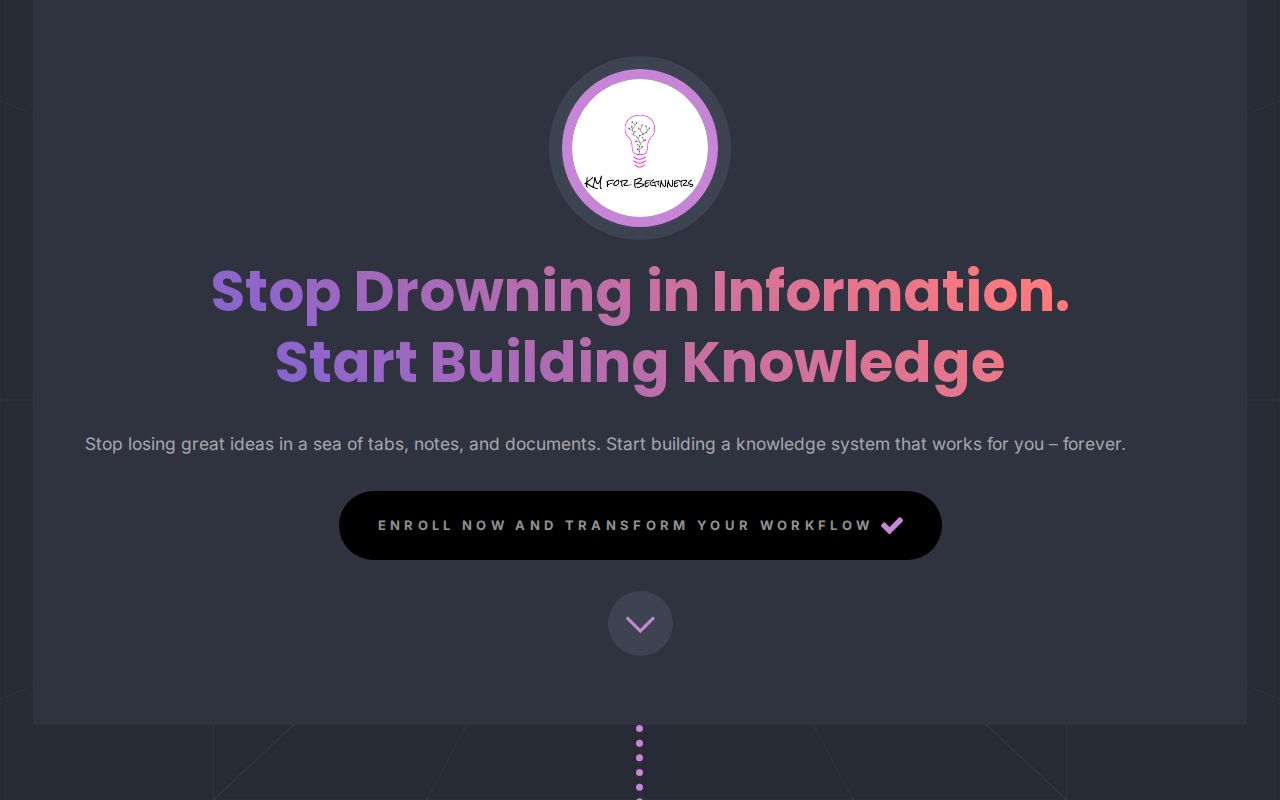
If you're ready to stop feeling overwhelmed by information and start building a system that actually works, the course provides everything you need, and then some more.
For those seeking a complete knowledge system, Knowii offers a comprehensive community with access to all my courses and products, structured learning paths, and ongoing support from peers and experts who face similar challenges.
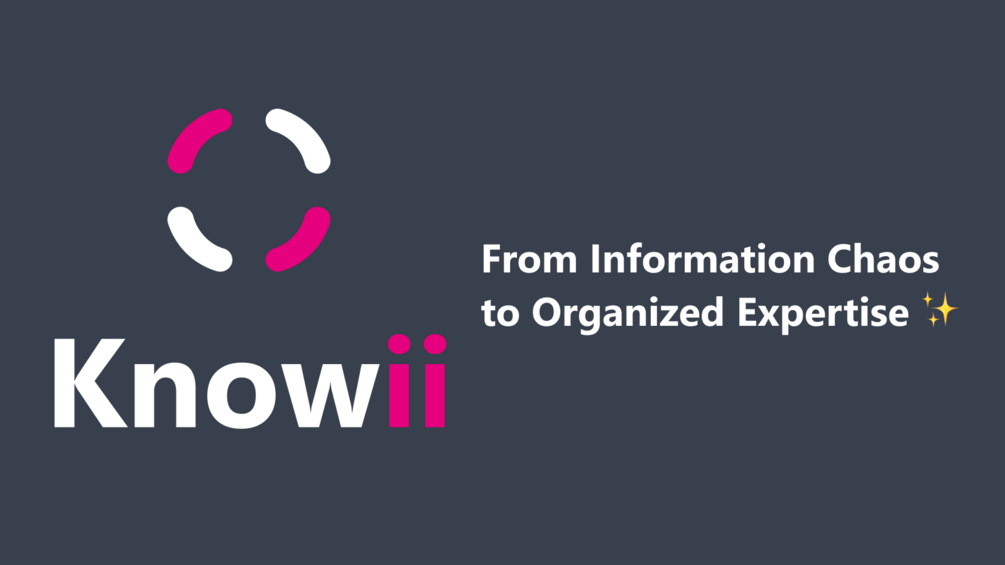
The choice is yours: continue struggling with information overload, or master these proven methods to build a knowledge system that multiplies your effectiveness.
Conclusion
Knowledge management isn't about collecting more information. It's not about hopping from tool to tool all the time, following the trends (i.e., Shiny object syndrome). No.
Rather, it's about building better systems for thinking. It's about creating a Fourth place, a place for deep thinking. It's something that I discussed earlier here.

These 10 methods provide the framework for transforming scattered thoughts into connected insights, random facts into organized knowledge, and information overload into personal power.
Start with one method, master it, then add the next. Your future self will thank you for taking the first step today.
That's it for today! ✨
About Sébastien
I'm Sébastien Dubois, and I'm on a mission to help knowledge workers escape information overload. After 20+ years in IT and seeing too many brilliant minds drowning in digital chaos, I've decided to help people build systems that actually work. Through the Knowii Community, my courses, products & services and my Website, I share practical and battle-tested systems. You can follow me on X 🐦 and on BlueSky 🦋.
I am an author, founder, and coach. I write books and articles about Knowledge Work, Personal Knowledge Management, Note-taking, Lifelong Learning, Personal Organization, and Zen Productivity. I also craft lovely digital products.
If you want to follow my work, then become a member and join our community.
Ready to get to the next level?
If you're tired of information overwhelm and ready to build a reliable knowledge system:
- 🎯 Join Knowii and get access to my complete knowledge transformation system
- 📚 Take the Course and Master Knowledge Management
- 🚀 Start with a Rock-solid System: the Obsidian Starter Kit
- 🦉 Get Personal Coaching: Work with me 1-on-1
- 🛒 Check out my other products and services. These will give you a rock-solid starting point for your note-taking and Knowledge Management efforts





